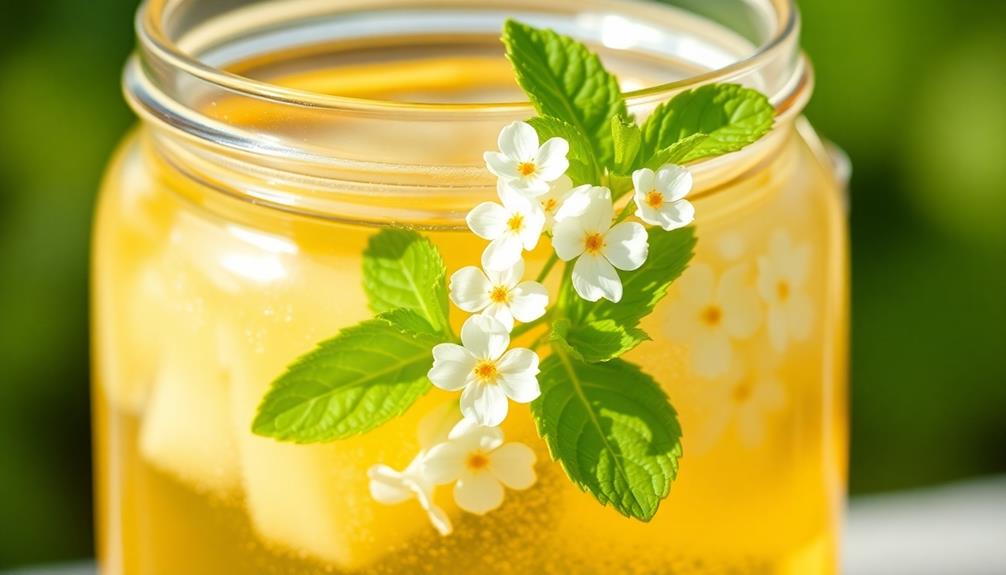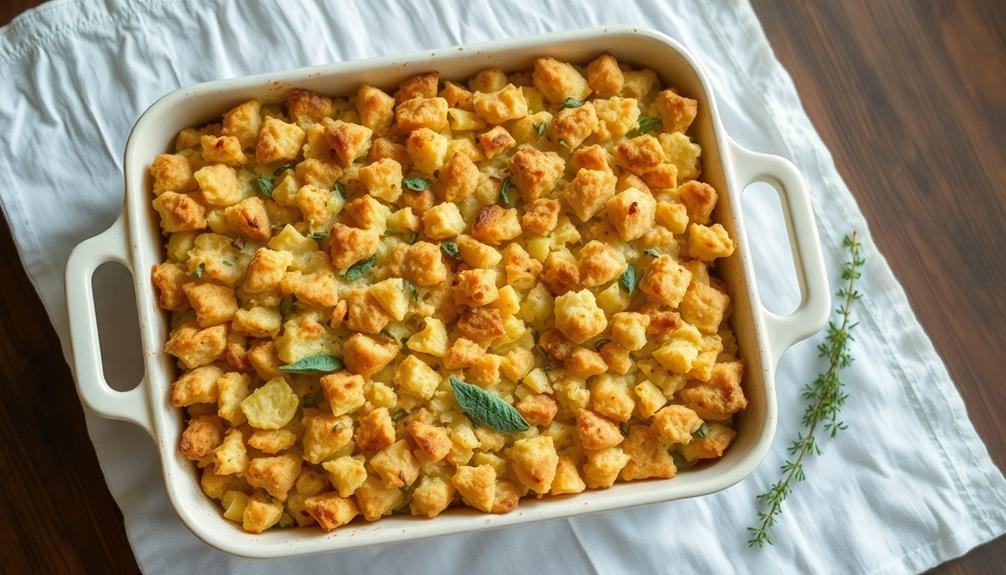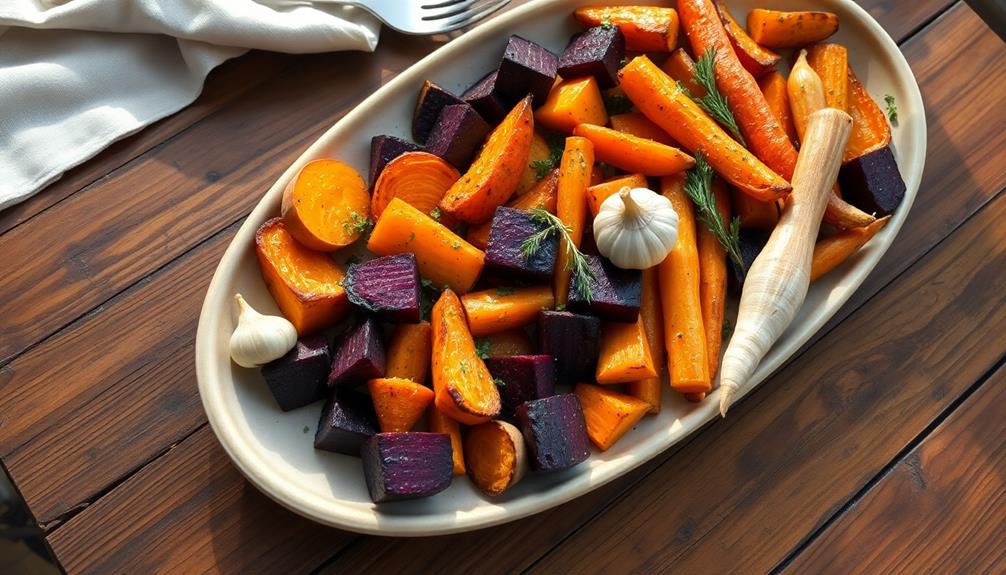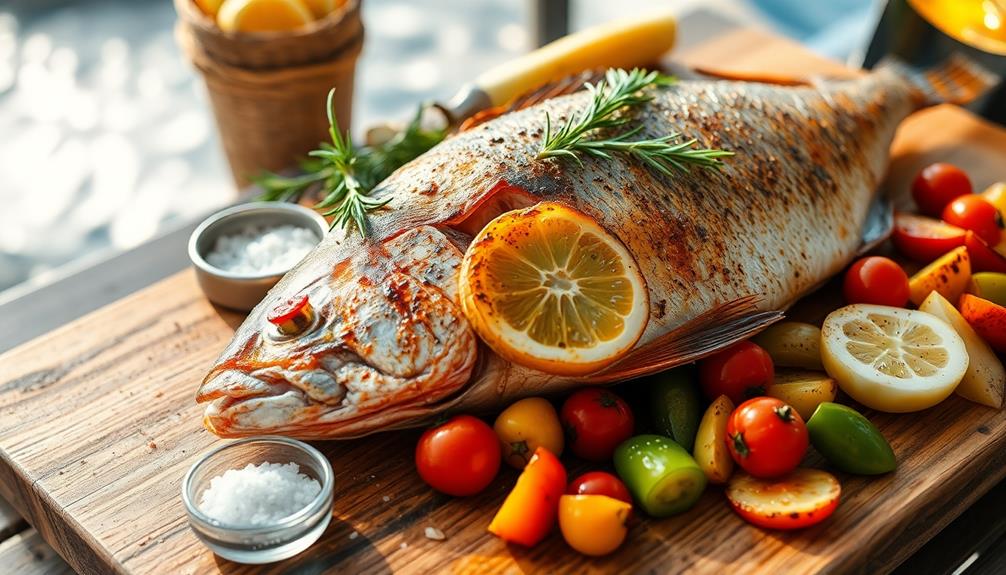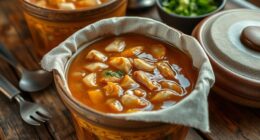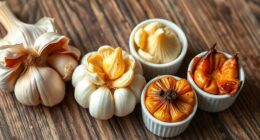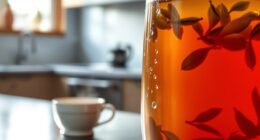Elderflower cordial captures the essence of spring, rooted in European folk traditions. You'll discover its floral aroma, refreshing flavor, and potential health benefits – an antioxidant-rich tonic for seasonal ailments. The recipe calls for fresh elderflowers, sugar, citrus, and boiling water; you'll steep, strain, and bottle this versatile cordial that works wonders in baked goods, cocktails, and homemade sodas. Properly stored, it can last up to a year unopened. Delve deeper to uncover elderflower cordial's history, culinary uses, and the step-by-step process for bottling nature's springtime essence.
Key Takeaways
- Elderflower cordial has a rich history, originating from European folk medicine and culinary traditions and gaining popularity among the aristocracy in the 18th and 19th centuries.
- The essential recipe involves infusing fresh elderflower heads in boiling water, straining the liquid, and combining it with sugar to create a sweet, floral-scented cordial.
- Proper storage and handling of the cordial, such as avoiding direct sunlight and refrigerating after opening, can extend its shelf life up to 12 months.
- Elderflower cordial is a versatile ingredient, often used in baked goods, cocktails, marinades, and homemade sodas, showcasing its refreshing and aromatic flavor profile.
- Elderflower cordial is prized for its potential health benefits, including its antioxidant properties and traditional use for aiding digestion and respiratory health.
History
Elderflower cordial's history can be traced back centuries, with its origins rooted in European folk medicine and culinary traditions. This fragrant, golden elixir was once prized for its purported health benefits, from aiding digestion to relieving cold symptoms.
In the 18th and 19th centuries, the cordial gained popularity among the aristocracy, who incorporated it into their elaborate tea services and social gatherings.
Today, the elderflower's delicate, floral essence continues to captivate both home cooks and professional chefs alike. Its versatility shines in everything from cocktails and mocktails to desserts and sorbets.
The cordial's enduring appeal lies in its ability to capture the fleeting beauty of spring, bottling the essence of this ephemeral blossom for year-round enjoyment. Whether enjoyed on its own or used as a flavoring, elderflower cordial remains a beloved symbol of nature's bounty and the changing of the seasons.
Recipe
Elderflower cordial is a refreshing and aromatic beverage made from the delicate blossoms of the elderflower plant. This homemade version captures the essence of summer, with its delicate floral notes and subtle sweetness. Enjoy it chilled on its own or use it to add a touch of elegance to cocktails, sparkling wine, or even as a flavoring in baked goods.
Preparing elderflower cordial is a straightforward process that allows you to savor the fleeting season of these beautiful flowers. The key is to harvest the blossoms at the peak of their bloom, typically in late spring or early summer, when their fragrance is most pronounced.
- 20 fresh elderflower heads
- 1 kg (2.2 lbs) white granulated sugar
- 1 lemon, thinly sliced
- 1 orange, thinly sliced
- 1 tablespoon citric acid (optional)
- 1.5 liters (6 cups) boiling water
In a large bowl, combine the freshly harvested elderflower heads, sugar, lemon and orange slices, and citric acid (if using). Pour the boiling water over the mixture, stir well, and cover. Allow the mixture to steep for 24 hours, stirring occasionally. Once the mixture has steeped, strain out the elderflower heads and fruit slices. Transfer the liquid to sterilized glass bottles and store in the refrigerator. This elderflower cordial can be enjoyed on its own as a refreshing drink, or used to add flavor to cocktails and desserts. Try adding it to a farmfresh egg recipe for a unique and delicious twist!
Strain the cordial through a fine-mesh sieve or cheesecloth, discarding the solids. Transfer the cordial to sterilized bottles or jars and store in the refrigerator for up to 4 weeks.
When making elderflower cordial, be sure to use only the flower heads, as the leaves and stems can impart a bitter flavor. Additionally, the citric acid helps to preserve the vibrant color and extend the shelf life of the cordial.
Enjoy this refreshing elixir as a standalone drink or incorporate it into a variety of summer-inspired culinary creations.
Cooking Steps
First, forage for fresh elderflowers.
Next, steep the blossoms in boiling water, then strain and bottle the aromatic cordial.
Step 1. Forage for Elderflowers
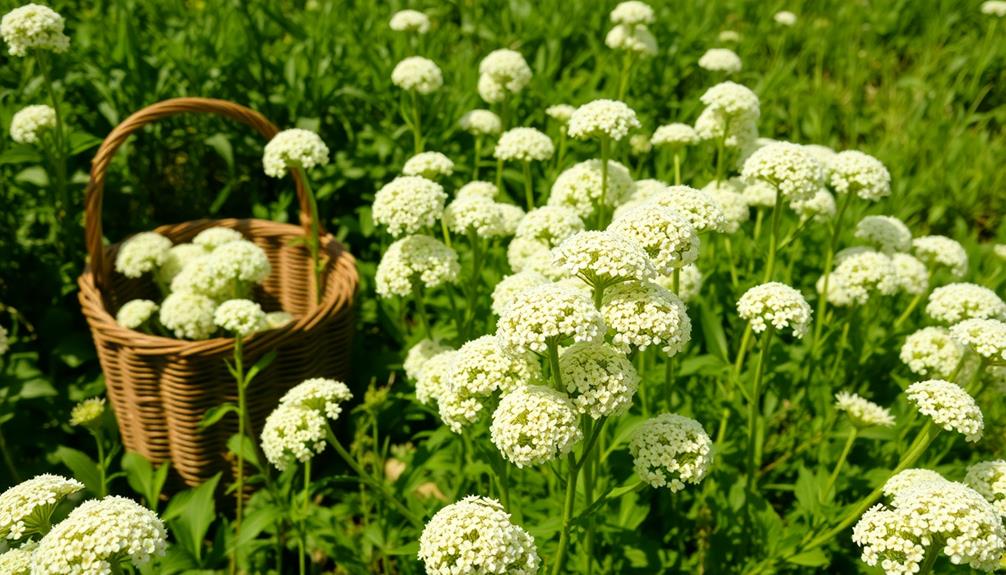
Once the elderflowers have been carefully selected, you'll want to gather them promptly. Look for clusters of creamy-white, fragrant blooms atop the elderberry bushes. Gently snip the flower heads, leaving a couple of inches of stem attached. Avoid collecting flowers from roadsides or areas that may have been sprayed with pesticides.
Timing is crucial – you'll want to forage for elderflowers when they're at their peak, usually in late spring or early summer. The blossoms are delicate and short-lived, so it's best to use them within a day or two of harvesting. If you can't process the flowers right away, store them in the refrigerator, lightly wrapped in a damp paper towel.
When foraging, take only what you need, leaving plenty for the birds and wildlife. Elderflowers are an important food source, so be mindful of sustainability.
With a little care, you can enjoy the fleeting beauty and flavor of these ephemeral blossoms.
Step 2. Steep Elderflowers in Boiling Water

With the fragrant elderflowers in hand, the process of crafting a delectable cordial can commence.
Bring a pot of water to a rolling boil, then remove it from the heat. Gently place the elderflowers into the hot water, ensuring they're fully submerged. Allow the mixture to steep for 4-6 hours, letting the floral aroma infuse the water. Periodically, give the pot a gentle stir to encourage extraction.
Once the steeping is complete, strain the liquid through a fine-mesh sieve, discarding the spent flower heads. Measure the resulting liquid and note the volume – you'll need this information for the next step.
In a clean saucepan, combine the strained liquid with an equal volume of white sugar. Heat the mixture, stirring occasionally, until the sugar has fully dissolved.
Allow the cordial to cool completely before transferring it to sterilized bottles. Seal the bottles, then refrigerate your homemade elderflower cordial until ready to enjoy its refreshing and versatile essence.
Step 3. Strain and Bottle Cordial
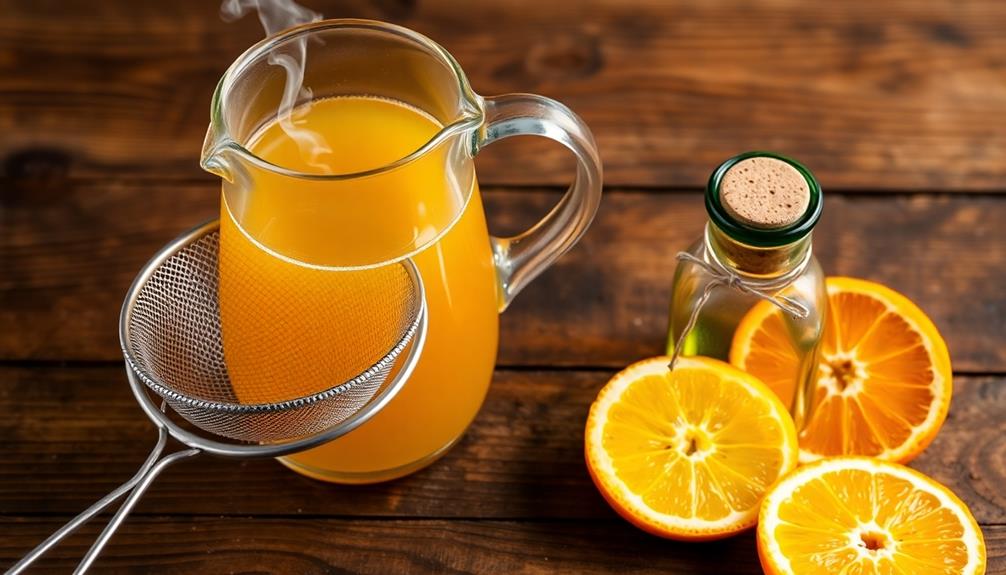
After the fragrant elderflowers have steeped in the hot water, it's time to strain and bottle the cordial. Grab a fine-mesh sieve or cheesecloth and carefully strain the liquid, discarding the spent flowers. The clear, pale yellow liquid you're left with is the concentrated essence of springtime.
Now, it's time to bottle your cordial. Sterilize some glass bottles or jars by submerging them in boiling water for a few minutes. Carefully remove them and let them air dry.
Funnel the strained cordial into the clean bottles, leaving about an inch of headspace at the top. Seal the bottles tightly and store them in the refrigerator. Your homemade elderflower cordial will keep for several weeks, though you'll likely find it doesn't last that long!
Enjoy the sweet, floral nectar over ice, mixed with sparkling water, or as a cocktail mixer.
Step 4. Seal and Label Bottles
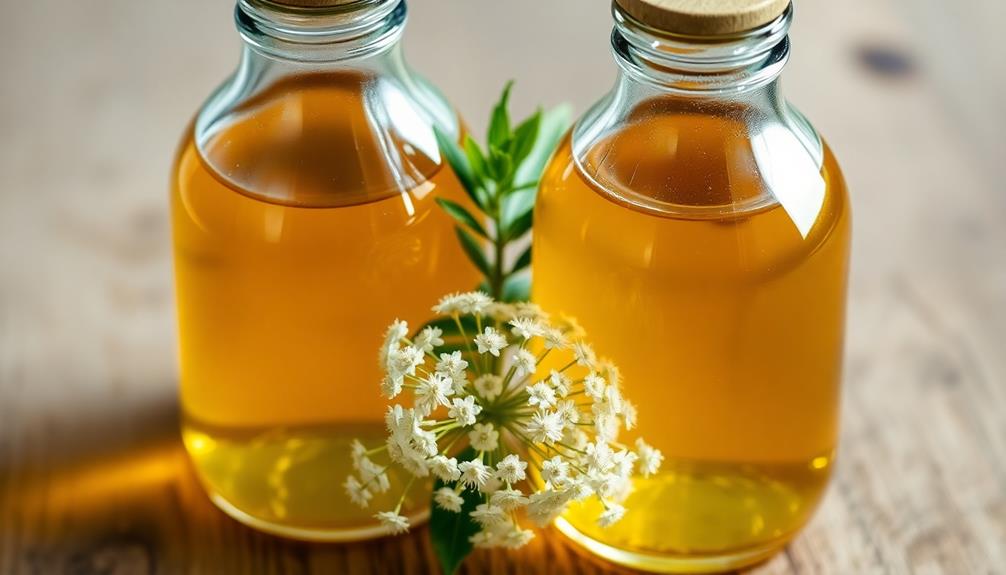
After sealing the bottles, you can label them to keep track of your cordial. Use a permanent marker to write the date on the lids. This will help you rotate your stock and ensure you consume the oldest bottles first.
Next, create custom labels for the bottles. You can print out simple designs or write the name "Elderflower Cordial" by hand. Affix the labels securely to the glass using a glue stick or double-sided tape. If you plan to give some of the cordial as gifts, leave a little space on the label to write the recipient's name.
Step 5. Store Bottles in Cool, Dark Place

Store the sealed and labeled bottles in a cool, dark place like a pantry or cellar. This protects the delicate floral flavor of the elderflower cordial from light and heat.
Ideal storage conditions are between 50-70°F. Avoid direct sunlight, which can cause the cordial to deteriorate over time. The cool, dark environment helps preserve the vibrant color and concentrated sweetness.
Check on the bottles periodically, ensuring the seals remain tight. If you notice any signs of spoilage, like clouding or mold, discard the affected bottles immediately.
Properly stored, the elderflower cordial should keep for 6-12 months. When ready to enjoy, simply chill and dilute with still or sparkling water. The cordial makes a refreshing non-alcoholic beverage or can be used in cocktails, poured over desserts, or drizzled over fresh fruit.
Savor the fleeting essence of spring whenever you crack open a bottle.
Final Thoughts
Elderflower cordial's versatility as a refreshing beverage or a flavourful addition to cocktails and desserts is undeniable.
You'll find yourself reaching for that vibrant bottle time and again, whether you're hosting a garden party or simply indulging in a quiet moment. The delicate, floral notes of the elderflower complement a wide range of flavors, from the zing of citrus to the richness of cream.
Don't be afraid to experiment – drizzle it over fruit salads, whisk it into homemade lemonade, or even use it to elevate your favorite baked goods.
And remember, this cordial's shelf life means you can savor the taste of spring all year round.
Frequently Asked Questions
How Long Can Homemade Elderflower Cordial Be Stored?
Homemade elderflower cordial can be stored for up to 2 months when refrigerated in sterilized bottles. The natural preservatives in the cordial allow it to last, but it's best consumed within a few weeks for optimal freshness and flavor.
Can Elderflower Cordial Be Frozen for Later Use?
Yes, you can freeze elderflower cordial for later use. Just pour it into airtight containers or ice cube trays, and it'll keep for several months. That way, you can enjoy the flavor of spring all year round.
What Are the Best Ways to Enjoy Elderflower Cordial?
You can enjoy elderflower cordial in a variety of ways. Mix it with sparkling water or white wine for a refreshing spritzer. Drizzle it over fruit salads or ice cream for a floral twist. You can even use it to sweeten homemade lemonade or iced tea.
Can I Use Dried Elderflowers to Make the Cordial?
You can use dried elderflowers to make the cordial, but the flavor won't be as fresh and vibrant as using fresh flowers. The dried version may also result in a less intense color.
Is Elderflower Cordial Suitable for Vegans and Vegetarians?
Yes, elderflower cordial is suitable for vegans and vegetarians since it doesn't contain any animal products. The key ingredients – elderflowers, sugar, and citric acid – are all plant-based, making it a great choice for those following a plant-based diet.
